Dudley Square has undergone a multitude of historical processes, from changes in transportation modes to commercial development to urban renewal. As a transportation and commercial center in 1885 housing horse livery stables, six hotels, and a bank, Dudley Square quickly grew in prominence with the construction of an elevated rail and streetcar station by 1899. This investment in transportation spurred commercial and residential development, most notably the construction of department stores adjacent to Dudley Station. Following a period of decline, the southern part of the site was almost entirely demolished in a process of urban renewal by the Boston Redevelopment Authority in the 1960's. The elevated rail station was removed in the 1980's and replaced with a bus station in the 1990's, which exists today. As the site's physical landscape has dramatically changed through time, some parts have been preserved, others destroyed, leaving a conglomeration of architectural styles and a site whose buildings date from many different periods. The presence or lack of traces of its landscape indicate the differential action of historical processes on the site. The varied longevity of historic landscapes on the site reflects two main approaches to new development in Dudley Square: repurposing historic buildings and structures to spur growth and building completely new buildings from leveled land. This duality leaves un uncertain future for Dudley Square's landscape.
Preserved Artifacts
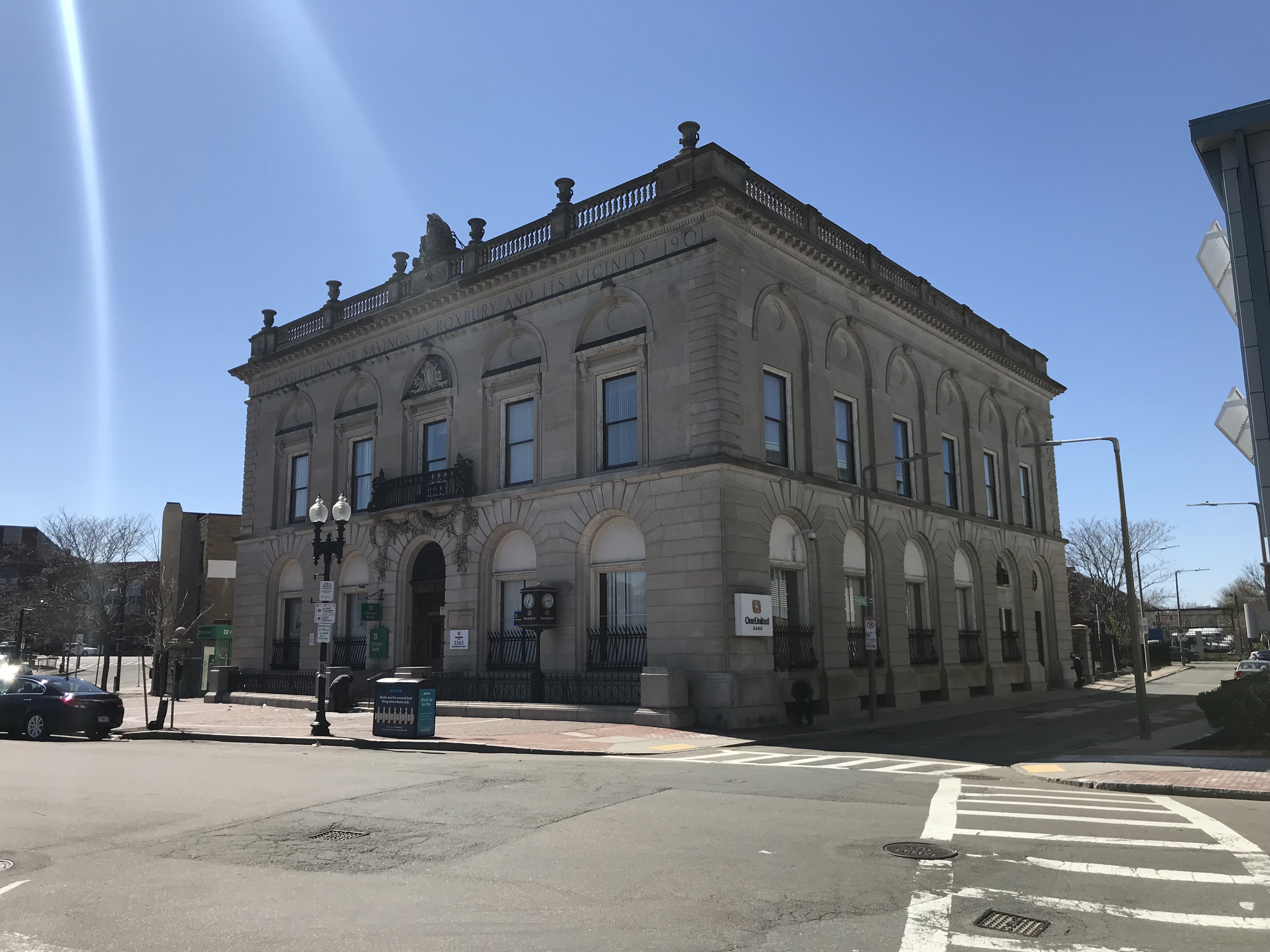 Figure 1: The bank: a vestige of a more prosperous era
Figure 1: The bank: a vestige of a more prosperous era
A few buildings on the site remain nearly the same as they were in the 19th century, reflecting a value for history and standing as reminders of a distant, prosperous past. One of the most notable is the bank located at the intersection of Washington and Marvin Streets (Figure 1). Markings on historical maps as well as an engraving on the top of the front façade read "Institution for Savings in Roxbury and its Vicinity." Though today, the building's occupant is Citizens Bank, a newer tenant with contemporary branding on the exterior, its use has remained throughout the years. The bank is grand and ornate, thus standing in stark contrast to the small, vacant storefronts but a block away. It serves as a reminder of Dudley Square's former prominence as a commercial center in Boston.
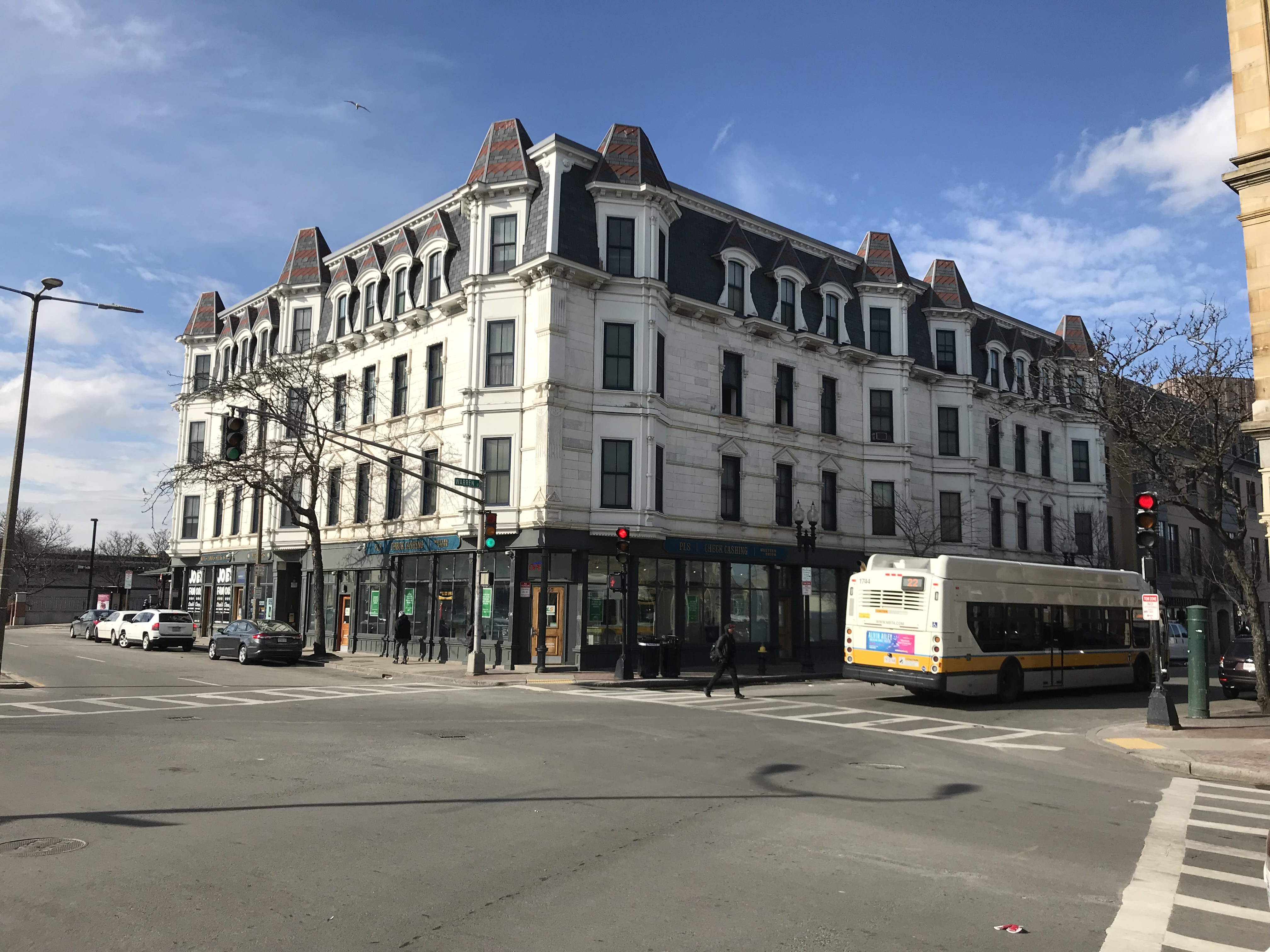 Figure 2: The last hotel building
Figure 2: The last hotel building
Another such building symbolizing a bygone era is the former Hotel Dartmouth building (Figure 2). Located at the corner of Warren and Dudley Streets, it is the last remaining building on the site that used to hold a hotel, a substantial change from the six hotels on the site in 1885. Today, the ground floor is occupied by shops, including a Western Union branch, perhaps reflecting the presence of immigrants in the neighborhood which use the service to send money to their home countries. The architectural style of the building, including a Mansard roof, contrasts with much of the neighborhood today and points to a more luxurious past. As a former hotel, the building is also a reminder that Dudley Square was once a place where people stayed, at least temporarily, rather than simply transited as seems to be the case today.
Incorporating History
 Figure 3: The Bolling Building and Ferdinand Building: a fusion of new and old
Figure 3: The Bolling Building and Ferdinand Building: a fusion of new and old
Though the site may not retain many of its buildings from the past as artifacts, some have been modified and repurposed to integrate new construction and contemporary uses. This approach reflects a value for history as well as a belief that landscapes from the past can be incorporated into new development to legitimize change. The Bolling Building is a key example of a combination of historic structures with contemporary uses. Located adjacent to the bus station where department stores used to stand, this building now houses offices for Boston Public Schools. While the southern portion of the building (to the right in Figure 3) is a completely new construction, the northern portion (to the left in Figure 3) has kept the historic façade of the Ferdinand Building, a former furniture department store which was next to the elevated rail station. The building's central location calls attention to this melding of history in its architecture. The Bolling Building is a symbol of the neighborhood's current rebirth insofar as it is the focal point of redevelopment and reinvestment by the City of Boston in Dudley Square .
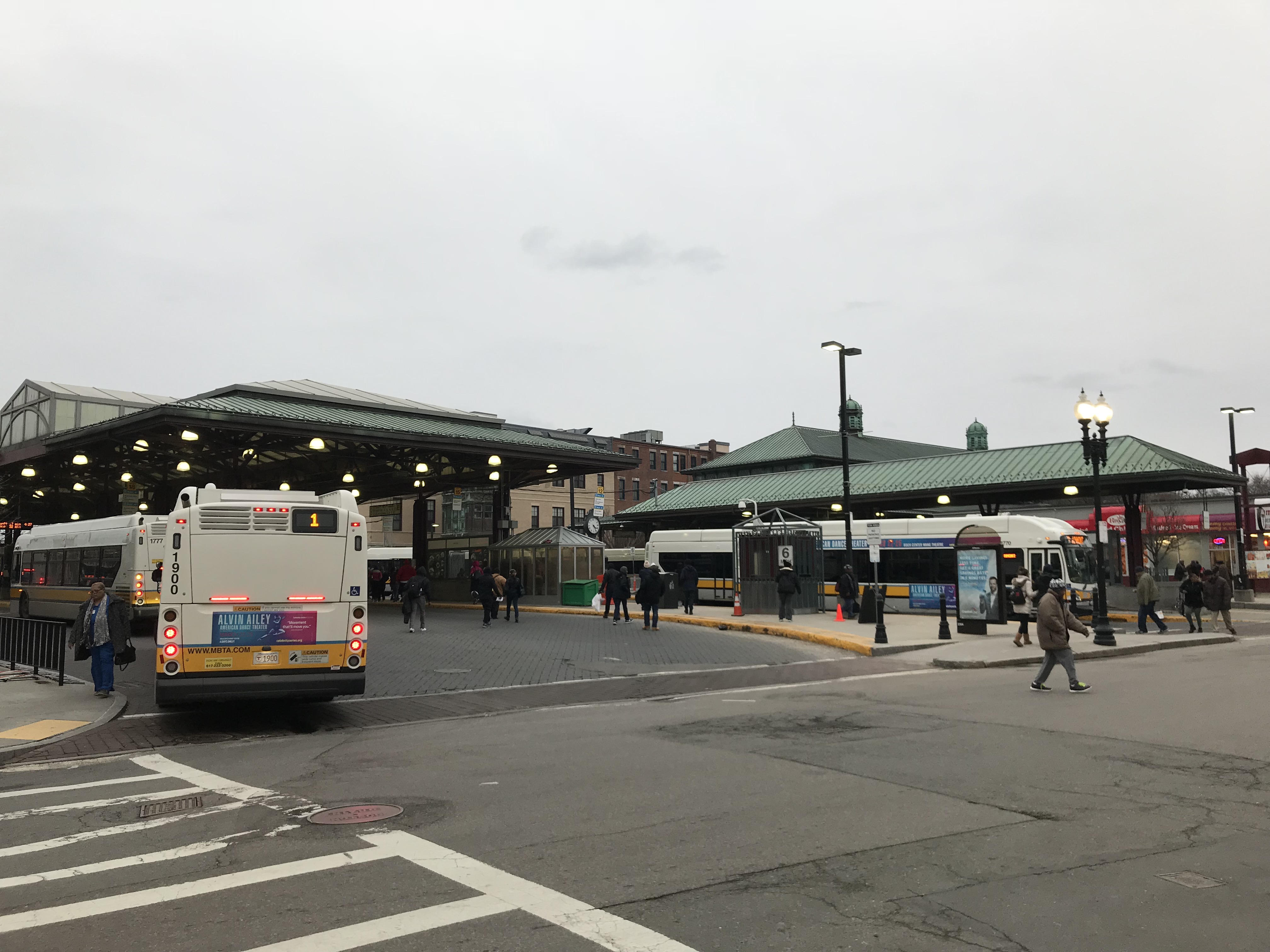 Figure 4: Repurposed bus shelters
Figure 4: Repurposed bus shelters
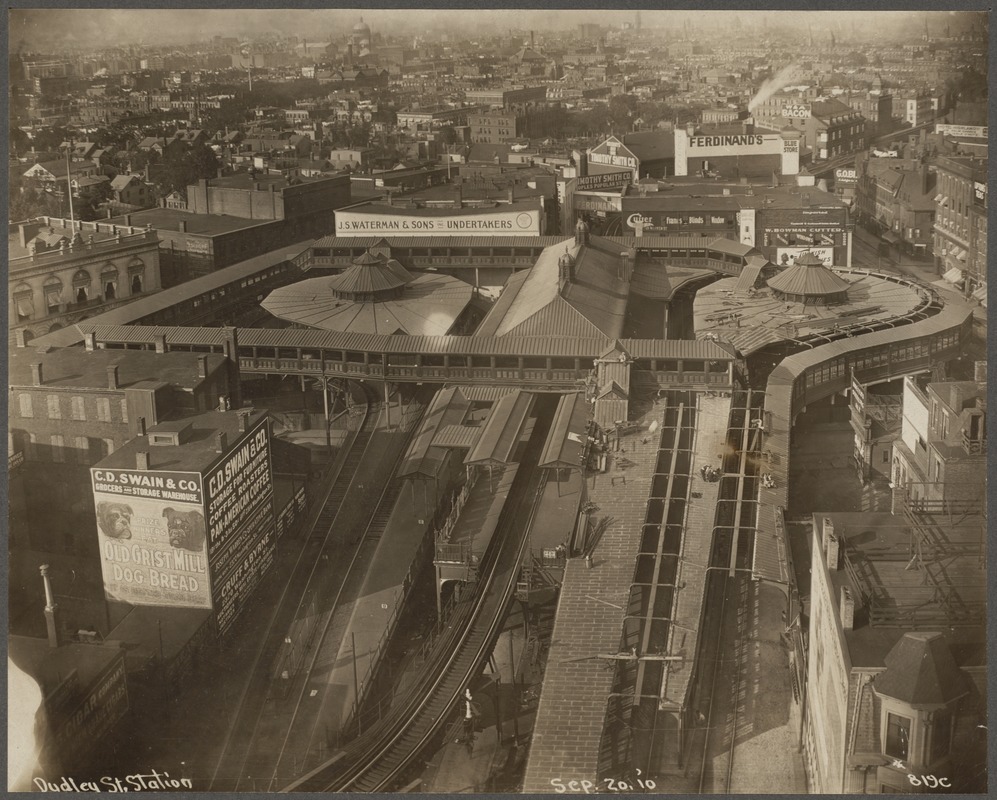 Figure 5: Dudley Station in 1910
Boston Elevated Railroad. Dudley Street Station. September 20, 1910. Boston Pictorial Archive, Boston Public Library, Boston. Accessed May 1, 2018. https://www.digitalcommonwealth.org/search/commonwealth:9593vc334.
Figure 5: Dudley Station in 1910
Boston Elevated Railroad. Dudley Street Station. September 20, 1910. Boston Pictorial Archive, Boston Public Library, Boston. Accessed May 1, 2018. https://www.digitalcommonwealth.org/search/commonwealth:9593vc334.
While the Bolling Building only integrates the former façades of buildings without regard for their past land uses, another structure, the bus station, reuses parts from the former elevated rail station as they were originally intended. The copper shelters used for the bus station platforms originate from the historic elevated rail station, demonstrating yet again a value placed on history when developing new buildings and structures. Despite the demolition of the elevated rail system and stations and replacement by the bus station, the original shelters were preserved as a way to commemorate the former station. Thus, the bus station does not represent new, invasive change and development, but is rather legitimized by its use of a visual language already familiar to the neighborhood.
Subtle Traces
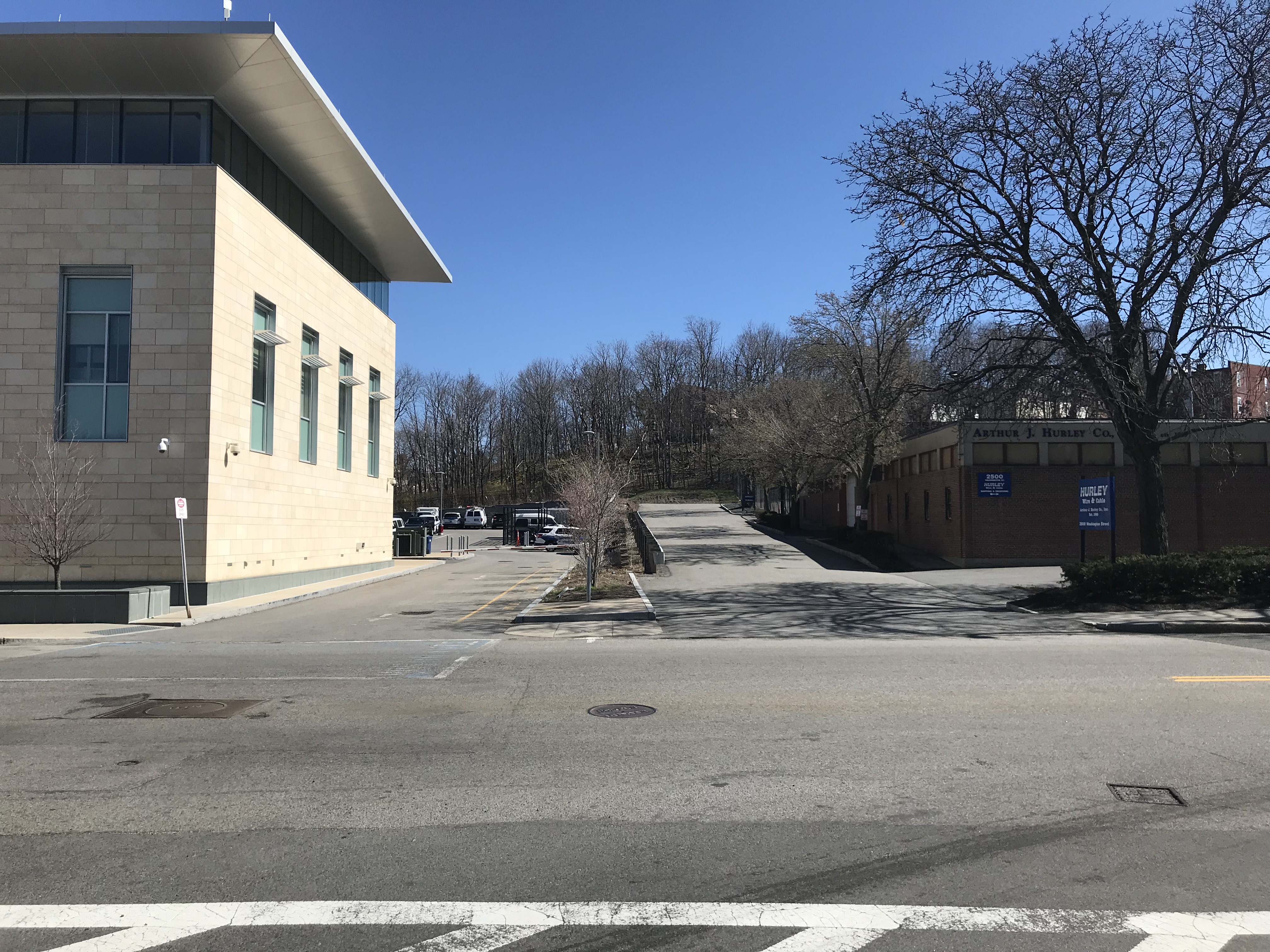 Figure 6: Grosvenor Place from the original street network now a parking lot entrance
Figure 6: Grosvenor Place from the original street network now a parking lot entrance
While some traces of the past are easy to identify thanks to a prioritization of historic conservation, others are much subtler, reflecting radical processes such as urban renewal which have erased some of the site's historic landscape. The southern part of the site, for example, retains nearly none of its pre-urban renewal features. In terms of buildings, only the row of houses along St. James Street remains. However, despite the destructive, all-encompassing nature of urban renewal, one trace of the original street network remains: the entrance to the parking lot of the police station which follows what was Grosvenor Place before urban renewal. Thus, even in the southern part of the site, largely a collection of modern stand-alone institutional buildings surrounded by parking lots, there are traces of the past, albeit nearly unnoticeable ones. This points to the endurance of historic street networks and their lasting effect even many years after they have seemingly disappeared.
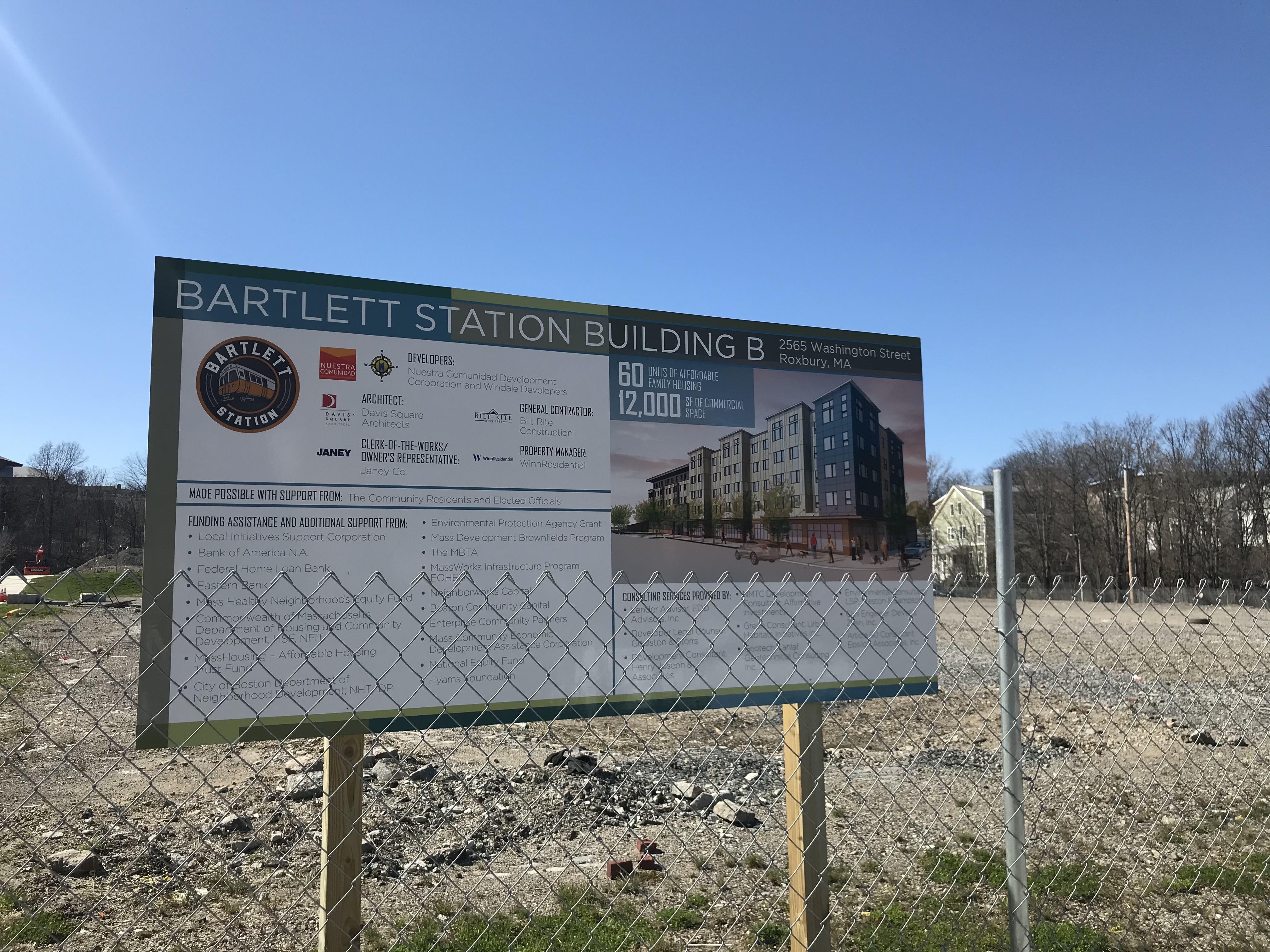 Figure 7: Bartlett Station Building
Figure 7: Bartlett Station Building
An even subtler trace of the past lies on the southwestern lot of the site. Based on historical maps, this lot contained a building serving as storage for horses, streetcars, and buses. Today, no physical trace remains of the building as the lot has been completely leveled to make way for a large mixed-use development. There remains, however, a trace of this historic use in the logo and name of the development: Bartlett Station Building. The logo includes the image of a train, thus making reference to the historic presence of train cars on the lot despite there no longer being a physical trace from their time. Although history has not been completely erased from this lot, this subtle trace reflects a more destructive and invasive approach to development as compared with the Bolling Building.
Future Development
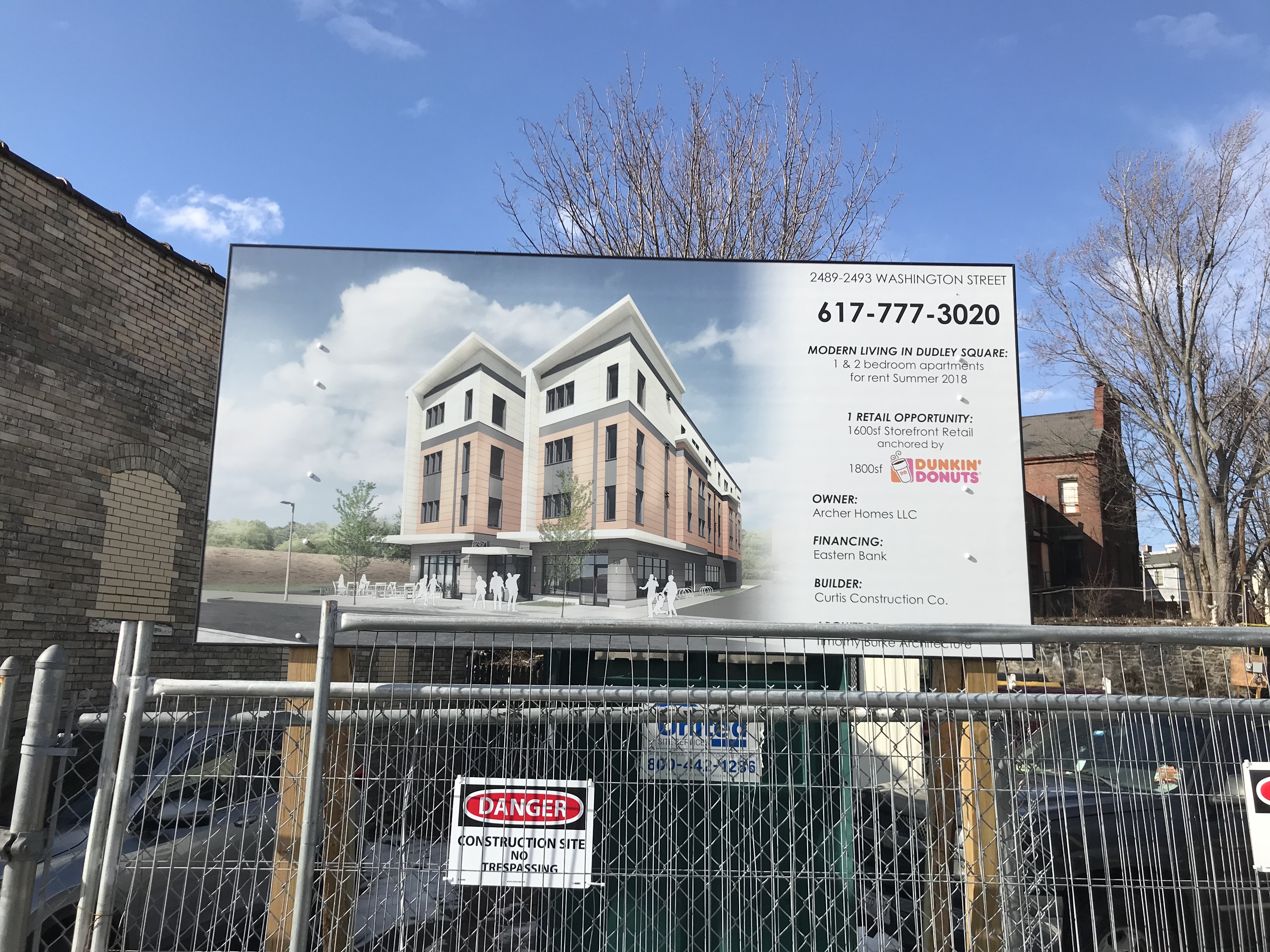 Figure 8: "Modern Living in Dudley Square"
Figure 8: "Modern Living in Dudley Square"
Between historical preservation and urban renewal, Dudley Square has clearly seen many methods of development and attitudes towards history. As the site continues to see new development, it is fitting to ask what the site will look like in the years to come. The Bolling Building is the most recent completed development while two mixed-use developments are still under construction, one being the Bartlett Station Building, the other being a small lot on Washington Street (Figure 7). Neither of these developments are incorporating physical parts of Dudley Square's historic landscape which suggests that this more invasive kind of development is persisting. Both of these developments also represent a risk of gentrification in Dudley Square which appears to be a predominantly low-income, minority neighborhood. This is especially true for the latter development, which likely caters to more affluent future residents as is clear with the slogan "Modern Living in Dudley Square."
 Figure 9: Dudley Square Mural
Figure 9: Dudley Square Mural
 Figure 10: Dudley Station Tiles
Figure 10: Dudley Station Tiles
In contrast to the two new developments which largely ignore history, there seems to be pride in the community living in Dudley Square for the history of the neighborhood. This is reflected in a mural located at Dudley Street and Washington Street as well as painted tiles located at the bus station. The mural (Figure 8) depicts residents as well as the former elevated rail and copper shelters of the rail station now serving the bus station. The tiles (Figure 9), painted by local students, depict buses, the bus station, and other buildings in the neighborhood. These depictions reflect the value that the local community places on the historic landscape of Dudley Square. This public art is likely part of a trend discussed by Hayden occurring in the 1990s, when the bus station was created, through which communities were engaged in the preservation of historic landscapes and in the creation of commemorative art . This kind of community engagement and historic preservation offers an alternative to the more conventional kind of ongoing development on the site.
Conclusion
Clearly, the physical legacy of history is difficult to entirely erase, as is seen, for example, in the endurance of Grosvenor Place despite urban renewal in the southern part of the site. When a building is built, or a right of way is established, it will likely endure to some degree. The extent of preservation, however, is determined by the attitude towards history by developers, planners, and designers. The duality of development and attitudes towards history in Dudley Square reflects a broader debate in urban planning and architecture. While constructing new buildings can increase housing and residential capacity and more obviously signal renewal and investment in a neighborhood, preserving or repurposing historic buildings retains historical value and allows part of the history of a neighborhood to remain in its physical landscape for current and future generations to enjoy and learn from. When communities are engaged in historical preservation, as Hayden discusses, the process is made more meaningful as historic buildings can embody the pride and the stories of a neighborhood's residents.
Bibliography
Text:
"Mayor Walsh Announces the Bruce C. Bolling Municipal Building." Boston Planning & Development Agency. July 31, 2014. Accessed May 01, 2018. http://www.bostonplans.org/news-calendar/news-updates/2014/07/31/mayor-walsh-announces-the-bruce-c-bolling-municipa.
Hayden, Dolores. The Power of Place: Urban Landscapes as Public History. Cambridge, MA: MIT Press, 1995.
Images:
Boston Elevated Railroad. Dudley Street Station. September 20, 1910. Boston Pictorial Archive, Boston Public Library, Boston. Accessed May 1, 2018. https://www.digitalcommonwealth.org/search/commonwealth:9593vc334.
All photographs were taken by the author. All diagrams were made by the author.